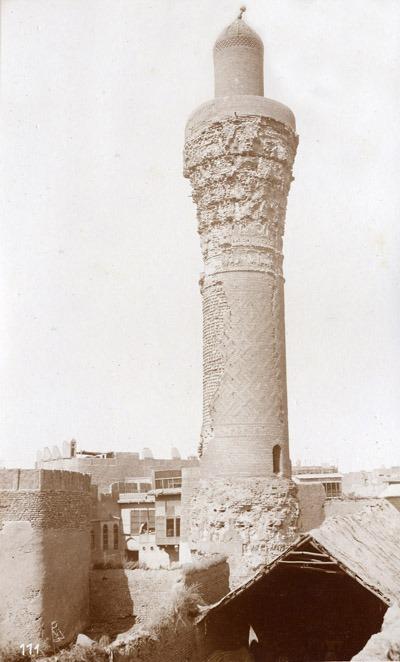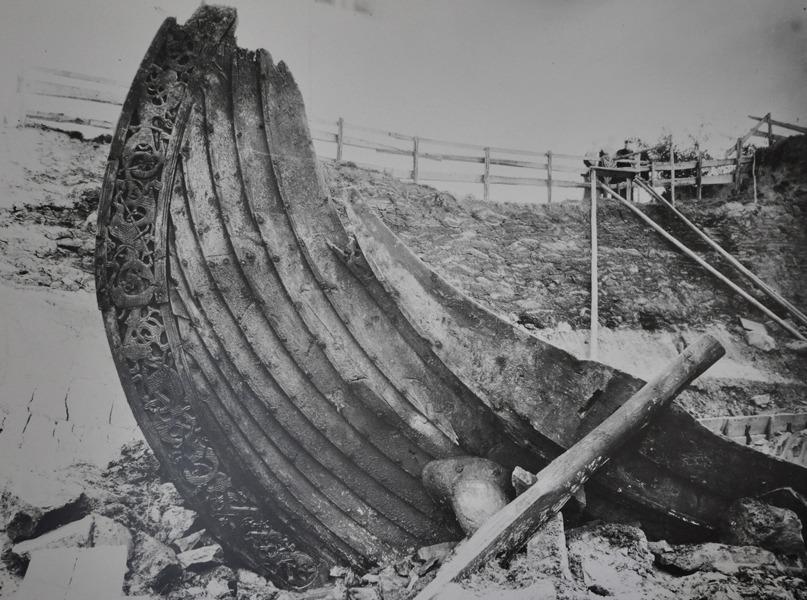
Al Ghazal, from Byzantium to the Viking country
Part II
By Jesús Cano. Arabist
By the mid-9th century travelling across the Mediterranean could be very dangerous, especially for an old man like al-Ghazal, who had earned a position in the Cordoban court good enough to be put out on such a hazardous endeavour.
Once they were in Constantinople, al-Ghazal could prove to himself that Abd-er-Rahman was not wrong when he chose him, aware that among his qualities there was no lack of perspicacity. It is said that when he arrived at the palace for the first time and faced the door leading to the hall of the throne, emperor Theophilus had a surprise in store for him, so as to play a trick on him and demonstrate his cleverness in front of his courtesans. It turned out that the entrance was made so low that nobody could go through it without kneeling. To do so would have been something unthinkable, not only for al-Ghazal, but for any Muslim, given the Koranic prescription that establishes that such humiliation is only possible before God. At the same time, al-Ghazal could not reject the invitation for obvious reasons. Then, to everybody’s surprise, he turned and walked away, crossing the door backwards, propelling himself with his hands and legs. Once he was inside, he turned himself towards the king and greeted him respectfully. That exhibition pleased everybody, including Theophilus, who had the opportunity through that demonstration that the Andalusi were not as barbaric as he thought.
Al-Ghazal remained for some time in that pompous court that should have pleased him, as he forgot his past fears. According to Ibn Hayyan and other chroniclers who talk about this journey, Theophilus, and above all his wife, were attracted by the manners of someone who was, above all, a refined courtier. It is said that the first time the Andalusi poet saw the Byzantine queen, “bejeweled and groomed like a rising sun”, he was so impressed that he watched her constantly, looking distracted in his contemplation to the extent that he was not able to pay attention to the kind words of the Basileus. And when the king showed his dislike through an interpreter, al-Ghazal reacted and said: “I am so dazzled by the beauty of this queen and her extraordinary human feature, that I am outside of the reason why I have been called, and this is just because I have never seen such a beautiful image and such a beautiful spectacle.” This was the way he won over not only the queen, but the king too.
This anecdote, which seems to come right out of The One Thousand and One Night tales, a work that was starting to be produced at that time, finely illustrates the main ability of someone who was precisely dubbed “the gazelle.”

The Guadalquivir River going through the city of Cordoba.
When al-Ghazal and his companion al-Munayqilah returned to al-Andalus they were “happy and honored and they found their families safe and sound”, according to the Muqtabis II’s account. Once in Cordoba again, the poet soon had to accommodate to a new storm, this time due to a complaint. It turned out that a vizier, eager to get the jewels that al-Ghazal had obtained for himself, requested a pearl necklace the empress of Byzantium had given him. Al-Ghazal, so as not to give it, plead that the necklace was broken, and he had to share the pearls among his daughters. The vizier, whose name was Abd-al-Aziz ben Hassim, believed him, and in order to exact his revenge, he pressured Abd-er-Rahman to punish a fraudulent operation perpetrated by the poet in the administration of the royal grain silos. It follows that a year of poor harvest he sold the sultan’s cereal at an exorbitant price and, the following year, when wheat grew and was abundant, he brought the sold grain back to the royal silos, pocketing the profits. As the emir was acquainted with the operation, he imprisoned the one who shortly before had served him so well, not to punish him for having profited from the famine of his subjects, but because he did not consent to return the profits that he considered belonged legitimately to him. In his opinion, nothing was illegal in that operation, as the verses he wrote in his cell testify:
God made us a favour
When the warehouse was not lost
And you got from me what was fair
Do not claim profits, nor covet.
This anecdote, which tells how al-Ghazal allowed himself to be drawn into greed (which, by the way, was not the first time) is opposed to the brave way the poet confronted the faqīhs. It is known that in al-Andalus, as in other Islamic countries, many of these powerful Islamic jurists have enriched themselves thanks to their knowledge. “You will not find faqīh who is not rich
I would like to know the way they get it”, once said our man of letters.

Nor was politics free of his criticism, as is clearly shown in his poem entitled “The wali”:
Asking me for advice, the qadi told me
About a man who was apparently fair
Who had been appointed wali:
What do you think he will do?”
And I replied
What do the bumblebees do with the bees
They peck their hives and eat their honey
And then, they leave the leftovers to the flies.
Abbasid minaret in Bagdad.
Someone with a strong personality like al-Ghazal, but above all self-assured, always willing to defend his right to disagree from power, even before his own sovereign, using an ironic, sharp and smart language. This freedom of thought was probably forged after his exile in Baghdad. There he might have been in touch with the modernists who followed the aesthetics created by Abu Nuwas, whose verses he presumably knew. He was permeated by that high rationalistic spirit that Abu Nuwas had generated during a short time, the philosophy known as Mutazilism, a supporter of free will in opposition to determinism at any cost.
The skills and know-how of this man weighed more to the sultan than his acrimonious rebelliousness. For this reason, Abd-er-Rahman decided to turn to him once again to ask him a new embassy, this time to the Land of the Normans. But before starting this account, we need to clarify that there are doubts concerning the truthfulness al-Ghazal’s adventure in the North. Prestigious historians like Lévi-Provençal or Huici Miranda consider it but a myth created in the 12th century by the chronicle from al-Andalus Ibn Dihya in his work al-Motrib[1], based on a popular legend. There is no lack of arguments for those who doubt this story, mainly due to the vast number of coincidences between it and the journey undertaken by al-Ghazal to Byzantium. However, recent research, like those by A. El-Hajj and D.W. Allen, who have translated and analysed Ibn Dihya’s account, by considering the most original detail, in certain cases highly unusual, are right in part in their assertion that it exists on a historical basis.
[1] Al-Motrib min Ashaar Ahl al-Magrib. (free translation of Rythm of the inhabitants of the Maghreb’s poems) colection of brief biographies of the poets from al-Andalus.

Detail from Osebergskipet (The Oseberg ship), whichwas found between 1904-1905, and was built 820, in the times of al-Gazal. At present it is in the Vikingskipmuseet (The Viking Ship Museum), in Oslo, Norway.
The story certainly starts with true facts: the attacks of the Norman vessels to the Iberian Peninsula coasts, the razzias that took place around 844 in several cities of al-Andalus, among them Seville; the Andalusi response, which defeated them and caused the Vikings to flee. Historians like al-Maqqari talk of a total defeat, with the Norman captain’s death, and the later visit of a Viking embassy to Cordoba on November 844, asking for peace. Abd-er-Rahman, as we know, was keen on negotiating, and in order to avoid new attacks he decided to send to the Normans country a legation headed by our Yahya ben Hakam al Bakrí, as he had a “sharp and resourceful mind, the ability to reply, courage and perseverance, knowing also how entering through any door”. Al-Ghazal chose again as a lieutenant, of course, his faithful partner al-Munayqilah.


Pictures showing both Cape St. Vincent (right) and Finisterre (left) as probable places where the ship in which travelled al-Ghazal and his expedition might have been attaiend by a storm severly damaging the vessels.
The journey starts with one of those coincidences with the account on Byzantium we have mentioned: as soon as they left Silves (Portugal) a storm hit the vessels in the coast, in a point named Aluwiya, which might equally be identified as Cape St. Vincent as well as Finisterre. After a first stop in Viking territory to repair the ships, probably in the northeast of Ireland, they finally reach the Viking kingdom, which he describes as “an island or a peninsula”, surrounded by many islands, all of them inhabited. Ibn Dihya said of those people: ”They were pagan, but they now follow the Christian faith and have abandoned the cult of fire.” This agrees with the historical facts since the Normans became Christians in the early 9th century. To this first plausible detail of the account, however, follow other less believable ones. Within this context, as soon as the Andalusis arrived, al Gazal asked his hosts that no one should kneel before him, so as to avoid himself doing it before anybody. This fact gives way to the famous anecdote of the low door, which was described in the chronicle of Byzantium, and which is repeated here in almost the same terms. This king was also impressed and exclaimed: “We intended to humiliate him, and he has greeted us with the soles if his shoes.”
When he stood before the king, after giving the letter from the Andalusi emir, the luxurious dresses and the pots filled with gifts, he again availed himself in front of the Viking queen of the arts of seduction that he used before the empress of Constantinople. The historian makes a separate comment in this point to comment on a later news related to this encounter. According to Ibn Dihya, the vizier Tamman Ibn Alqama, in an interview with al-Ghazal upon his return from the North, asked him if that woman was really that beautiful, to which the poet answered: “I swear by your father that she had such a charm!” But by speaking to him that way, I won his favour and got from him more than I wanted.”
Regarding the relation with the queen of the Vikings, named Nud, the story approaches deeply to the account of Byzantium: both royal wives showed to be absolutely delighted with the presence of that aged man, and they searched to be in his company constantly, although the Viking queen apparently behaved more naturally. When al-Ghazal’s companions noticed the great familiarity with the one who was ultimately the sovereign ‘s wife, they begged him to put an end to that situation, which the poet found reasonable.
The old poet stopped answering to almost every royal call and rationed the visit to a single interview every two days. As Nud realised this change, she asked him, desolated, why he showed that disdain. Al Ghazal is then honest and tells her that he does not want to awake jealousy in his honourable guest. Upon hearing the answer, the queen could only laugh, responding: “There is not such a thing in our custom, and jealousy does not exist among us. Our women are with their husbands only by their own will. A woman remains by her husband as long as he is nice to her, but she will leave him when he is not so anymore”.
There is some other anecdote that refers to the relationship between the elderly poet and the young and voluptuous Viking first lady, such as when she suggested to his admired guest to dye his grey hair look younger. The answer, in verse, could not have been more insightful:
Do not disdain the flash of white hair!
It is the flower of understanding and intelligence.
I have what you crave in youth.
Elegance in style and education.
Indeed al-Ghazal was not exactly Young at that time. Ibn Dihya’s chronicle tells that he was more than fifty and, to tell the truth, by all accounts, he was much more than sixty, although he might have looked younger.

Santiago de Compostela, by David Roberts.
When the Andalusi people returned to al-Andalus, and of course only appears in the account of the trip to the country of the Normans, they stopped in Saint Yakub, that is to say Santiago de Compostela, to deliver a letter from the Viking king to the governor of that holy place and “to see the pilgrimage”, (and here we have more interesting data) that lasted two months, after what the Andalusi delegation spent time calmly going along the Christian kingdoms, for there was no notable incident in this part of the trip, and the delegation arrived back in Cordoba, after twenty months absence, in the summer of 846.
As we have just said, al-Ghazal could be already more than seventy years old. Some may think that he could have had not much life left. Nothing could be further from the truth. Several authors say that he reached the age of ninety-four, but the most accurate source may be these verses in his own handwriting:
I have lived thirty years and as many more
Plus, thirty-two
The third of them in distractions
The second third, in sin
And the third in an abyss
Where my piety and faith are little […]
I have a worn body but
Matched with a devilish soul
With fresh and new hope
As a knew in my early days.
BIBLIOGRAPHY
|

